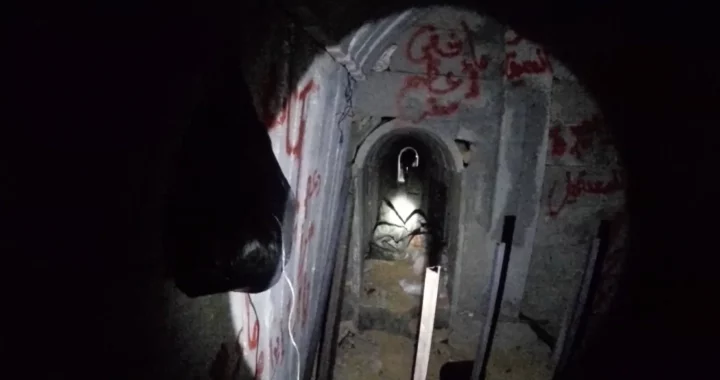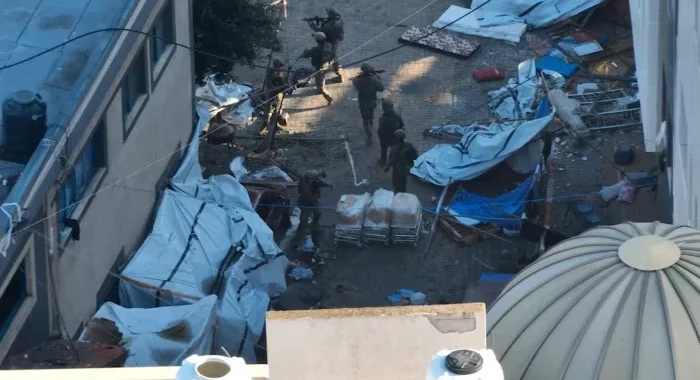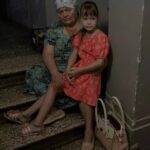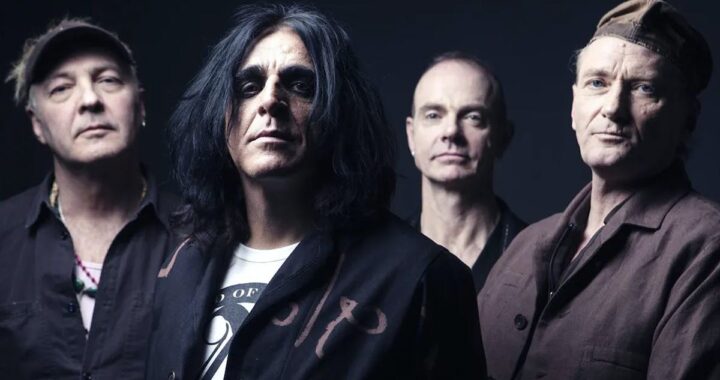Day of the Dead honors ancestors with traditions

Honoring Ancestors: The Traditions of Day of the Dead
Día de los Muertos, also known as Day of the Dead in English, stands as a cherished and time-honored tradition in Mexico, rooted in a history spanning thousands of years.
In the United States, you’ve likely encountered the unmistakable symbols associated with this holiday: papel picado (vibrant paper adorned with intricate cutouts), calaveras (elaborate skulls), and marigold flowers. Notable cinematic references include its prominent portrayal in the movie “Coco” and the captivating opening scene of “Spectre.”
Día de los Muertos serves as a heartfelt homage to the afterlife, a day dedicated to honoring the departed and preserving their memory. Diverging from Halloween, which historically served as a means to ward off malevolent spirits, Day of the Dead focuses on paying tribute to beloved individuals who have passed away.
Here’s a deeper insight into this meaningful occasion.
When does Day of the Dead take place?
Day of the Dead is consistently observed from November 1 to November 2. These dates mark the occasion when it is thought that the spirits of the deceased come back to their homes to reunite with their families.
Who participates in Day of the Dead festivities?
While Day of the Dead holds strong cultural ties to Mexico, various other nations, both within and outside of Latin America, also observe their unique interpretations of this holiday. In the Philippines, it goes by the name Undas and aligns with the first two days of November. Much like the Mexican tradition, Filipinos pay visits to the graves of their dear ones and construct altars to honor their memory.
In Haiti, the event is known as Fèt Gede, the Festival of the Dead. Here, people attire themselves in white, black, and purple, and the country comes alive with vibrant parades.
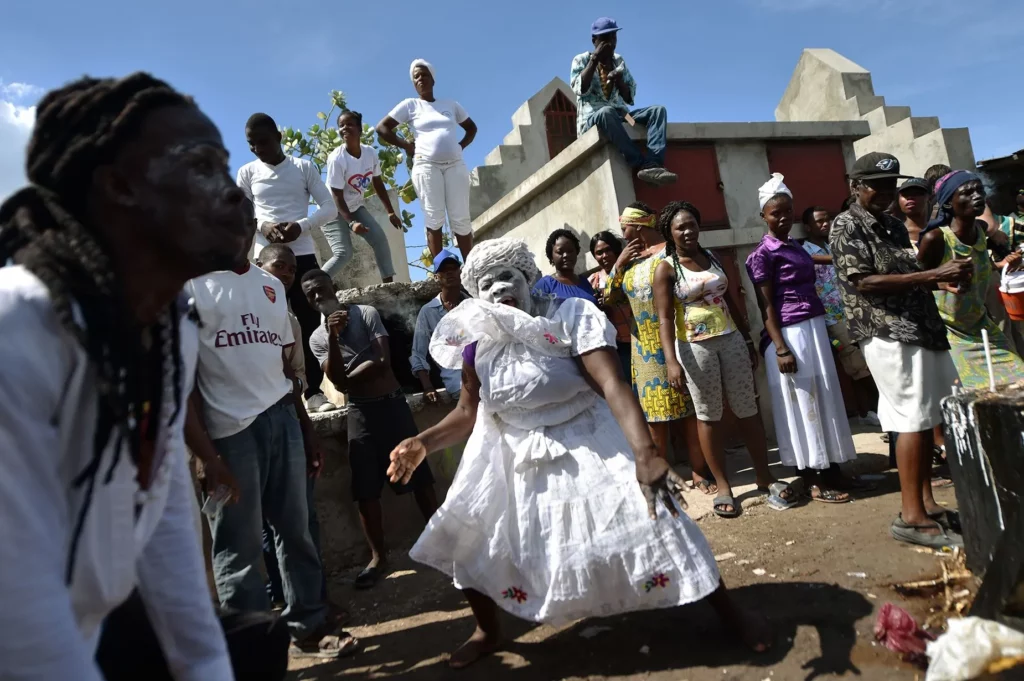
What is the historical background of Day of the Dead?
The roots of Day of the Dead can be traced back to indigenous practices in the Americas, notably among the Aztecs. The Aztecs observed a ritual called Miccaihuitl, dedicated to honoring the departed.
However, with the arrival of the Spanish in the Americas, they introduced Catholicism, which included its own observances: All Saints’ Day on November 1 and All Souls’ Day on November 2, both commemorating those who have passed away. The Spanish then amalgamated their Catholic traditions with the indigenous customs, giving rise to the evolution of Día de los Muertos.
What are the customs associated with Day of the Dead?
Day of the Dead is a time when many individuals pay their respects to departed relatives and loved ones by visiting their graves. Rather than a somber occasion, these visits are marked by acts of cleaning and adorning graves and tombstones with vibrant flowers. Prayers and musical expressions may also fill the air.
The atmosphere often resembles a celebratory gathering, featuring music, culinary delights, and beverages. People assemble to reminisce and share stories about their cherished departed, thus ensuring the perpetuation of their memory.
In certain Mexican cities, lively parades and festivals take place in honor of the day. Many participants don skull-like face paint and don costumes, with women frequently dressing up as La Catrina, an elegant, tall female skeleton donning a resplendent gown and a flamboyant hat perched upon her head.
It’s worth noting that iconic figures like La Catrina trace their origins to the artistic creations of Mexican artist José Guadalupe Posada, who sketched this character in 1910 as a satirical commentary on Mexico’s upper social strata.
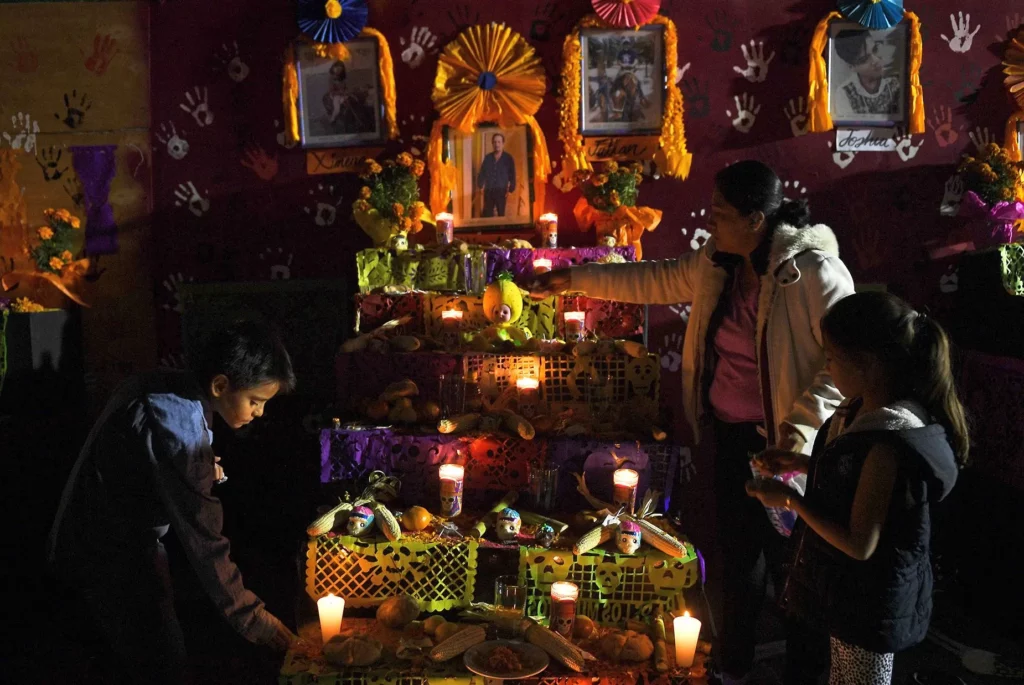
What are ‘ofrendas’?
Among the most revered elements of Day of the Dead are the altars known as ‘ofrendas.’ These altars are meticulously constructed within homes, educational institutions, or other communal spaces to pay tribute to the departed.
Family members typically adorn the altar with a prominent photograph of the deceased, complemented by colorful ‘papel picado,’ or ‘perforated paper.’ These vibrant tissue papers symbolize the element of air, as the altars are designed to represent all four natural elements. ‘Marigold’ petals are another essential feature, guiding the spirits back home with their vibrant hues and fragrant aroma. Candles, serving both as a means to illuminate the way and as symbolic representations of the departed, are commonly found on ofrendas. Additionally, ‘pan de muerto,’ a traditional Mexican sweet bread with roots in Aztec traditions, takes its place on the altar. Sugar skulls, often included on ofrendas, allude to the ever-present reality of death.
Salt, often arranged in the form of a cross, is positioned on or near the ofrenda to purify the visiting souls. Families may also provide a container of water, and sometimes even tequila, to quench the thirst of the returning spirits after their arduous journey.
However, these altars can also carry deeply personal touches. Some families opt to include the deceased’s favorite foods or cherished personal mementos from their lives, such as a beloved book or a treasured shirt. This comprehensive arrangement serves as a dual-purpose, preserving the memory of the departed and paying them homage upon their return.
By: M Z Hossain, Editor Sky Buzz Feed

